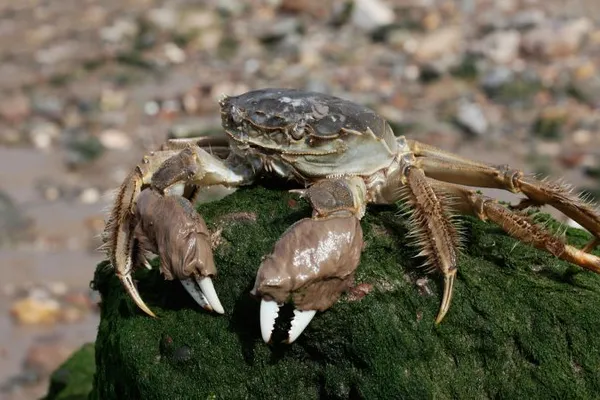Scientists across Europe have joined forces under an EU-funded project named “Clancy” to combat the relentless invasion of Chinese mitten crabs. These
In a race against time, scientists across Europe have joined forces under an EU-funded project named “Clancy” to combat the relentless invasion of Chinese mitten crabs. These intimidating creatures, named for the dense mats of hair on their front claws, have become a major environmental threat, wreaking havoc on native ecosystems.
As part of this collaborative effort, a groundbreaking trap developed by the University of Antwerp and the Flanders Environment Agency is proving to be a game-changer in controlling the explosive mitten crab population.
The Invasion Unleashed
First spotted in Europe over a century ago in a river close to Bremen, Germany, these crabs likely hitched a ride in the ballast water of ships from their native Asia. Since then, their populations have exploded across the continent, with 18 of the European Union’s 27 member states grappling with the invasion.
Classified as one of the world’s 100 worst invasive alien species, Chinese mitten crabs possess remarkable adaptability. They feed on almost anything, thrive in both fresh and saltwater, and boast a rapid reproductive rate, with females laying between 250,000 and 1 million eggs per spawning.
The Clancy Project Emerges
In response to the escalating crisis, scientists initiated the Clancy project in 2023, aiming to curb the mitten crab population and protect native ecosystems from irreversible damage. The European Union, recognizing the severity of the issue, provided crucial funding for this collaborative endeavor.
Trapping the Invaders: A Belgian Breakthrough
The most successful strategy to date involves a trap designed by the University of Antwerp and the Flanders Environment Agency. Installed in Belgium since 2018, the trap employs a metal channel across riverbeds, capturing migrating crabs as they move along.
Unlike other aquatic species, the crabs cannot swim out, compelling them to crawl along pipes leading to cages on either shore. This innovative approach has resulted in the capture of an estimated 3 million crabs.
Similar traps, modeled after the Belgian success, have been independently installed in the UK, with plans for expansion across Belgium, Germany, France, and Sweden in the coming years.
Migration Marvels and Urban Intrusions
Chinese mitten crabs embark on astonishing migrations during autumn and spring, covering up to six miles (10 kilometers) a day. Their visibility peaks during these migrations, leading to occasional urban invasions. Testimonies describe hundreds of crabs crawling through the streets of small Belgian towns, climbing walls, and even infiltrating people’s homes.
The thriving success of mitten crabs in European environments can be attributed to their lack of natural enemies, opportunistic feeding habits, resilience, and potentially, the influence of climate change. The species exhibits strong genetic diversity, with hybridization enhancing their competitive edge.
The Economic Toll and the Trap’s Promise
Invasive alien species cost the EU an estimated €12 billion ($13 billion) annually in economic damage. Recognizing the traps as a cost-effective solution, scientists emphasize their simplicity and efficiency.
Unlike other trapping methods involving nets, the metal channel traps minimize bycatch, ensuring a more targeted approach. With the potential for wider deployment in small tributaries, the traps offer a scalable and accessible means of combating the invasion.
Ethical Dilemmas and Culinary Considerations
As the traps successfully collect millions of crabs, a pressing question arises: what to do with them? Different countries in the EU adhere to varying animal welfare rules. In Germany, scientists can only kill crabs by boiling or using an electric current, while in Belgium, freezing is an approved method.
The Clancy project aims to explore the most humane way to handle the captured crabs and investigate potential uses for the collected specimens. While mitten crabs are a seasonal delicacy in China, their limited meat content makes them less popular in the European market. Nevertheless, some crabs collected in Belgium are repurposed as animal feed in a local zoo.
The Path Forward: A Coordinated European Strategy
Despite the ongoing challenges, scientists participating in the Clancy project remain optimistic about its potential to gather crucial knowledge and data. The coordinated European effort aims to develop an international strategy for controlling the mitten crab population.
By understanding the extent of the problem and how different populations are connected, scientists hope to pinpoint specific locations on the continent that require targeted interventions.
“We need to have a coordinated action to help each other out, because there are no political boundaries for these animals,” emphasizes Jonas Schoelynck, professor of aquatic ecology at the University of Antwerp.
As the battle against the invasive Chinese mitten crab intensifies, the collaborative efforts of European scientists may pave the way for effective solutions, offering hope for the restoration and preservation of native ecosystems threatened by these formidable invaders.
